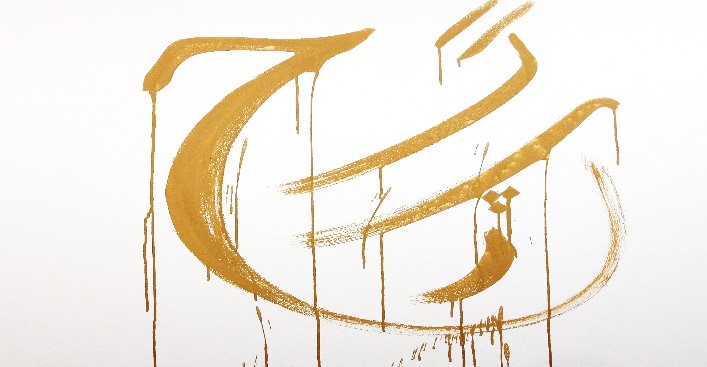CALLIGRAFFITI, 2016
Slip Terracotta clay, Timber
200 x 92 x 35 cm
In Calligraffiti, to express political resistance Habibi has combined elements of contemporary graffiti and traditional Persian Calligraphy. The work consists of the four Persian letters پ ژ چ گ (g, zh, ch, p) written onto timber with liquid unfired clay. The Persian alphabet contains all the letters of the Arab alphabet and, in addition, four letters which exist only in Persian, to express sounds non-existent in the Arabic phonetic language. The use of letters that occur only in the Persian alphabet places this work in the context of the history of the Persian script, which while maintaining the Persian language was changed after the Arab invasion of Persia from Pahlavi script to Arabic script. This work can initially be interpreted in relation to national identity, but also as a metaphor for the suppression of political freedom.
The use of the four Persian letters پ ژ چ گ g, zh, ch, p in Persian writing is by itself not necessarily political, because the letters do form part of the official Persian alphabet. The work conforms to aesthetic sensibilities of the recent regimes in Iran, because on a superficial level the work could be a calligraphic rendition of a verse from a poem or the Quran. On closer observation, if the four Persian letters are identified, the work can represent Iranian identity.
The clay drips symbolise the restriction of political freedom and they stand in for ink or paint because of clay’s humble and natural qualities. The style of writing is Nastaliq, a revered cursive soft calligraphic Persian style, often used for poetry, unlike the more angular Kufic Arabic calligraphy used for copying religious writing. The writing is a reminder for the viewer of exercises for students of calligraphy. The association with student exercises is extended because the clay used for writing on the wall is not permanent and will be washed away after the exhibition. The application of the work onto a timber surface associates it with contemporary graffiti and directs the viewer to the implicit political criticism.
